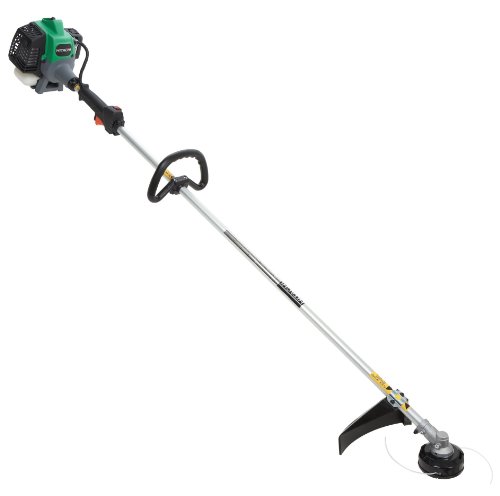The first recorded example of people using air pressure to remove leaves comes from Japan in the 19th century, when gardeners used bellows to clean up mossy ground.
It has been claimed by others and widely circulated around the internet that the Japanese then were the first to have the idea of adding a hose and motor, around 1970, and then sold the machines into the USA. If they did, they were by then copying developments that had already taken place in the USA and Europe.
Blowin' in the wind
The concept for the blower as we now know it started in America in the 1950s as part of agricultural crop-spraying 'mist blowing' equipment.
Some key early milestones are as follows:
1950 Echo Inc. of the USA (also an early hedge trimmer manufacturer) introduce the first engine-powered backpack duster/sprayer. It is used to dispense pesticides in nurseries and on crop farms.
1951 Public Works Director of Hartford Connecticut, Charles Cook, has the idea of using two of their snow blowers to remove leaves. He warns they 'can only be used when leaves are wet because dry leaves would be blown for blocks...'
1955 Echo create the backpack duster/mist blower DM-9.
Late 1950s Consumers are found to be dismantling the chemical dispensing equipment and just using the powerful blowing unit. Manufacturers see the potential and begin to make leaf blowers for commercial applications. These are 'walk-behind' or backpack machines. (It is claimed by a Wikipedia contributor that one Dom Quinto was the inventor of the modern leaf blower in the late 50s, but there is no corroboration of this entry and it may be fanciful or mischievous).
1959 H.L. Diehl, an ex-Pratt & Whitney jet engine technician, develops what his company claims 'the first walk-behind lawn vacuum and leaf blower'.
1963 One of the first examples of a backlash against leaf-blower noise when the city of White Plains takes action following complaints.
1960s The Dutch Vandermolen company is making and exporting a 2-stroke engine backpack blower.
1966 H.L. Diehl re-brands his company as Giant-Vac. They introduce a range of machines.
1969 Giant-Vac introduce the first leaf-loading machine that collects leaves as well as blowing them around.
1971 Echo unveil their PB-9 petrol-engined backpack blower, which widens the appeal of leaf blowers to smaller users.
1978 Echo launches probably the first petrol hand-held power blower. Domestic users and commercial landscapers now have access to a blower, and soon more manufacturers (including McCulloch, now part of Swedish multinational Husqvarna) enter the new market. In Los Angeles legislation is mooted to curb 2-stroke engine pollution: thus begins the movement to make producers switch to cleaner 2-strokes, 4-strokes, or electric power.
1985 US backpack sales 75,000. Weed Eater begin producing a hand-held petrol-powered blower.
1987 US total sales 464,000.
1989 US sales 800,000. Stihl of Germany, the chain saw innovators, launch backpack blowers. They become a leading force.
1997 Over 1 million US sales.
1998 Los Angeles bans the use of petrol blowers within 500 feet of a residence, and promotes a powerful (but quieter and less-polluting) electric blower design.
1999 US sales 1.9m: 1.6m hand-held blowers and 290k backpack blowers.
2003 Electrolux patents a variable-speed electric leaf blower. (This is today copied by Black & Decker, Ryobi and others).
2004 Briggs & Stratton buys out Giant-Vac and creates a Yard Power Products Group focusing mainly on commercial markets.
2007 First recorded game of leaf blower hockey is played in Toronto.
Late 2000s First 4-stroke motors appear to meet tougher emissions laws in various US states and in other countries. Cordless battery models become viable due to more powerful Nicad and lithium-ion batteries, e.g. Ryobi models with 120mph/ 193 km/hr air speed.
Prevailing winds
Recent trends in leaf blowers:
Machines have got quieter: many petrol-engined models now emit less than 65dB at 50 feet, whereas older machines were 70-75, which in decibel terms is hugely greater. Operators' hearing could be impaired by these old devices. (It is still recommended that ear defenders be worn by any user). The move to electric (corded or cordless) has also reduced average machine noise.
Brands that claim excellent emissions reductions in their petrol models include Echo; Hitachi, whose 2-stroke Pure Fire motor meets the US Phase 2 and Euro Stage 2 regulations; and Makita, who have gone over to 4-stroke engines, including the world's lightest 4-stroke handheld machine at 4.4kg (the equivalent Hitachi 2-stroke is 3.9kg so that is a fine achievement for the traditionally heavier engine technology).
There is increasing popularity for the more versatile vacuum/blowers that can also suck up dust or gather leaves and mulch them before collecting them in a bag to avoid the collection chore, as well as aiding the composting process. Electric and petrol combination machines now abound, from lightweight Flymo and Black & Decker models to wheeled hand-push devices from GMC and Warrior and powered-wheel machines from Billy Goat. Suction machines also counter criticisms that simple blowers raise harmful dust and are damaging to nearby plants. Their extra versatility may well be appreciated more and more in years to come.
Other innovations include electronic 'Touch Start'12V battery starting on petrol machines (from Ryobi) to avoid the chore and uncertainty of pull-cord starts. Others have an easy-start carburettor to make the pull leas onerous.
The early history of the leaf blower has been somewhat affected by controversy but it is undeniably popular and it has a permanent place in garden and commercial applications due to the much greater productivity that it affords when compared to a man with a rake and spade. Machines will continue to improve and get greener, and consumer choice will grow even further.




